Vauxhall Combo Cargo vs VW Polo – Differences & prices compared
Compare performance, boot space, consumption and price in one view.
Find out now: which car is the better choice for you – Vauxhall Combo Cargo or VW Polo?
The Vauxhall Combo Cargo (Cargo Van) comes with a Diesel, Petrol or Electric engine and Manuel or Automatic transmission. In comparison, the VW Polo (Hatchback) features a Petrol engine with Manuel or Automatic transmission.
When it comes to boot capacity, the Vauxhall Combo Cargo offers , while the VW Polo provides 351 L – depending on how much space you need. If you’re looking for more power, decide whether the 136 HP of the Vauxhall Combo Cargo or the 207 HP of the VW Polo suits your needs better.
In terms of consumption, the values are 17.40 kWh5.20 L per 100 km for the Vauxhall Combo Cargo, and 5.10 L for the VW Polo.
Price-wise, the Vauxhall Combo Cargo starts at 22400 £, while the VW Polo is available from 17000 £. Compare all the details and find out which model fits your lifestyle best!
Vauxhall Combo Cargo
The Opel Combo van is a versatile and practical choice for both businesses and families, offering ample space and comfort. Its efficient design provides ease of manoeuvrability in urban settings, while also delivering a smooth and reliable performance on longer journeys. The interior is thoughtfully equipped with modern features, ensuring a convenient and enjoyable driving experience.
detailsVW Polo
The VW Polo remains a popular choice in the compact car segment, known for its sleek design and sophisticated styling. Inside, it offers a surprisingly spacious cabin with high-quality materials and intuitive technology features, ensuring a comfortable driving experience. Its agile handling and responsive performance make it an excellent option for both city commuting and longer journeys.
details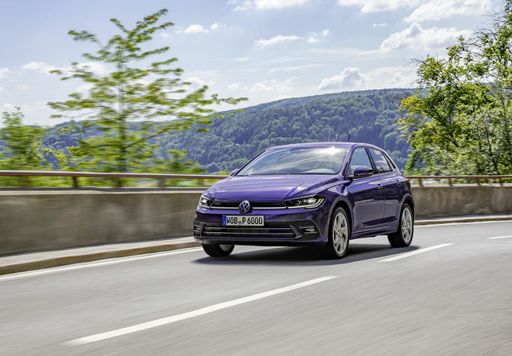 @ Volkswagen
@ Volkswagen
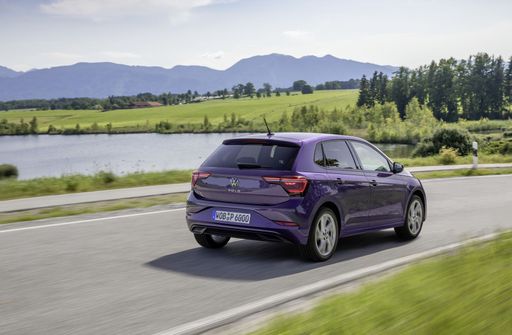 @ Volkswagen
@ Volkswagen
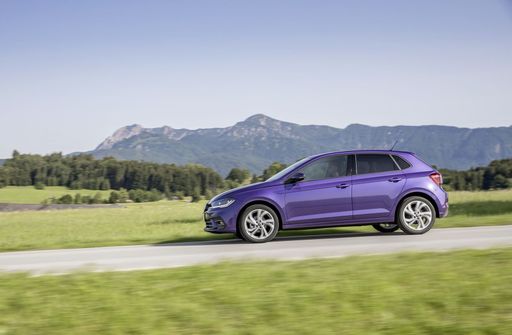 @ Volkswagen
@ Volkswagen
 @ Volkswagen
@ Volkswagen
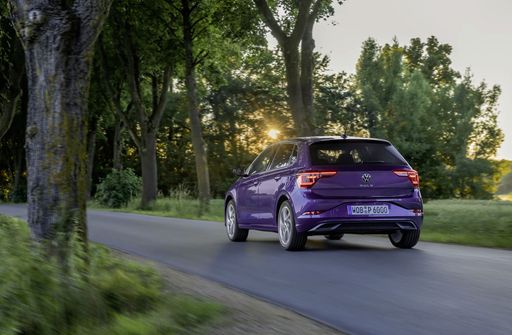 @ Volkswagen
@ Volkswagen
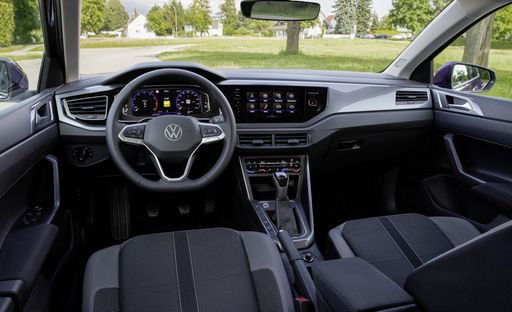 @ Volkswagen
@ Volkswagen

|
|
|
|
|
Costs and Consumption |
|
|---|---|
|
Price
22400 - 34700 £
|
Price
17000 - 30400 £
|
|
Consumption L/100km
5.2 - 6.3 L
|
Consumption L/100km
5.1 - 6.5 L
|
|
Consumption kWh/100km
17.40 kWh
|
Consumption kWh/100km
-
|
|
Electric Range
354 km
|
Electric Range
-
|
|
Battery Capacity
-
|
Battery Capacity
-
|
|
co2
0 - 143 g/km
|
co2
116 - 148 g/km
|
|
Fuel tank capacity
53 - 61 L
|
Fuel tank capacity
40 L
|
Dimensions and Body |
|
|---|---|
|
Body Type
Cargo Van
|
Body Type
Hatchback
|
|
Seats
2 - 6
|
Seats
5
|
|
Doors
4 - 5
|
Doors
5
|
|
Curb weight
1329 - 1813 kg
|
Curb weight
1143 - 1378 kg
|
|
Trunk capacity
-
|
Trunk capacity
351 L
|
|
Length
4401 - 4751 mm
|
Length
4074 mm
|
|
Width
1848 mm
|
Width
1751 mm
|
|
Height
1820 - 1825 mm
|
Height
1431 - 1451 mm
|
|
Payload
611 - 991 kg
|
Payload
432 - 457 kg
|
Engine and Performance |
|
|---|---|
|
Engine Type
Diesel, Petrol, Electric
|
Engine Type
Petrol
|
|
Transmission
Manuel, Automatic
|
Transmission
Manuel, Automatic
|
|
Transmission Detail
Manual Gearbox, Automatic Gearbox
|
Transmission Detail
Manual Gearbox, Dual-Clutch Automatic
|
|
Drive Type
Front-Wheel Drive
|
Drive Type
Front-Wheel Drive
|
|
Power HP
102 - 136 HP
|
Power HP
80 - 207 HP
|
|
Acceleration 0-100km/h
11.20 s
|
Acceleration 0-100km/h
6.5 - 15.6 s
|
|
Max Speed
135 - 183 km/h
|
Max Speed
171 - 240 km/h
|
|
Torque
205 - 300 Nm
|
Torque
93 - 320 Nm
|
|
Number of Cylinders
3 - 4
|
Number of Cylinders
3 - 4
|
|
Power kW
75 - 100 kW
|
Power kW
59 - 152 kW
|
|
Engine capacity
1199 - 1499 cm3
|
Engine capacity
999 - 1984 cm3
|
General |
|
|---|---|
|
Model Year
2024
|
Model Year
2024 - 2025
|
|
CO2 Efficiency Class
E, A
|
CO2 Efficiency Class
D, E
|
|
Brand
Vauxhall
|
Brand
VW
|
Vauxhall Combo Cargo
Discovering the Opel Combo: A Compact Van with Big Capabilities
The Opel Combo is a standout in the realm of compact vans, offering a blend of practicality, efficiency, and advanced technology. Whether you are a small business owner in need of a reliable transport solution or an eco-conscious driver looking for a green alternative, the Opel Combo has something to offer. Let's delve into the technical details and innovations that make this van a noteworthy contender in its class.
Engine Options: Flexibility Meets Efficiency
The Opel Combo boasts a wide range of engine options to cater to various driving needs. Available in both diesel and petrol, as well as electric versions, the Combo offers a versatile selection of powertrains. With engine power ranging from 102 PS to an impressive 136 PS, the Combo ensures that you have enough oomphto get the job done.
The diesel variants present efficient fuel consumption statistics, with figures between 5.4 to 5.9 L/100 km, ensuring fewer stops at the fuel station. Meanwhile, the electric models offer an attractive alternative with a range of 326 to 336 km on a single charge, emphasizing Opel's commitment to sustainable mobility.
Innovative Technology: A Step Forward
Innovation in the Opel Combo is not just limited to its engines. It incorporates state-of-the-art features designed to enhance the driving experience. Automatic transmission options provide smooth gear transitions, reducing driver effort and fatigue, especially in urban settings. A key technological highlight is the inclusion of advanced driver assistance systems which enhance safety and ease of use.
The Combo's infotainment system is equipped with all the modern connectivity options, making it easy for users to stay connected on the go. With intuitive controls and an ergonomic layout, the system enhances the overall driving experience by keeping essential functions accessible at all times.
Design and Practicality: Structured for Success
Opel has masterfully balanced form and function in the Combo's design. With a compact exterior measuring between 4401 to 4753 mm in length, the Combo is perfect for navigating urban environments without sacrificing cargo space. The van offers a generous payload capacity of up to 916 kg, demonstrating its ability to handle demanding logistical tasks.
Inside, the Combo provides comfort and practicality with seating configurations ranging from 2 to 6 seats. This flexibility makes it ideal for both goods transport and ferrying staff. With a maximum speed of up to 184 km/h, the Combo ensures timely deliveries while maintaining Opel's standard for safety and efficiency.
Environmental Considerations: Efficient and Responsible
The Opel Combo manages to balance power and environmental responsibility efficiently. CO2 emissions range from 0 for electric variants to a moderate 155 g/km for certain diesel configurations. These figures demonstrate Opel's dedication to reducing the environmental footprint of its vehicles.
Moreover, the Combo Electric models, with energy consumption as low as 18.6 kWh/100 km, prove that Opel is committed to offering cleaner, alternative fuel vehicles that meet modern environmental standards.
Conclusion: A Compact Van That Packs a Punch
The Opel Combo emerges as a versatile and innovative choice in the compact van segment, blending efficiency, technology, and practicality seamlessly. For those searching for a reliable partner in business or an eco-friendly transport solution, the Combo stands out as a compelling choice. With a price range that accommodates various budgets, the Opel Combo deserves serious consideration from anyone in need of a robust yet refined transport solution.
VW Polo
Unveiling the VW Polo: A Compact Car with Big Ambition
The VW Polo, with its sleek hatchback design, stands out in the compact car segment, offering a blend of practicality and innovation. Volkswagen has continued to refine this popular model, ensuring that each new iteration provides cutting-edge technology and enhanced driving dynamics.
A Closer Look at the Mechanics
Under the bonnet, the VW Polo offers a series of efficient petrol engines ranging from 80 to 207 horsepower. These engines, coupled with either a manual or dual-clutch automatic transmission, provide a smooth and responsive driving experience tailored to various driving preferences.
Efficiency Meets Performance
The fuel consumption of the VW Polo is impressively economical, varying between 5.2 and 6.5 litres per 100 km, depending on the engine and transmission combination. Emphasising the car's commitment to sustainability, the CO2 emissions vary between 118 to 149 g/km, placing it within the D to E efficiency classes.
Design and Dimensions
The Polo's dimensions, featuring a length of 4074 mm, width of 1751 mm, and a height ranging from 1431 to 1451 mm, offer a compact profile ideal for urban driving. Despite its size, the Polo provides a generous 351-litre boot space, catering to everyday needs and beyond. With a five-door configuration, it balances convenience and style.
Advanced Features and Variants
The VW Polo 2024 model year comes with a variety of trim levels, from the practical "Life" to the sportier "R-Line", each bringing distinct features and enhancements. High-tech interiors, usability enhancements, and a host of driver-assistance systems are standard, reflecting Volkswagen's dedication to integrating innovation into its vehicles.
Tech-Savvy Interiors
Inside, the Polo is equipped with modern infotainment systems, Apple CarPlay, Android Auto, and wireless connectivity options, ensuring that drivers and passengers remain connected while on the move. The ergonomically designed cabin and digital cockpit enhance the user experience, making every drive comfortable and intuitive.
Conclusion: The All-Rounder in the Compact Car Market
The VW Polo continues to be a compelling choice for those seeking a compact, reliable, and technologically advanced vehicle. With its range of engines, well-appointed interiors, and a robust suite of features, the Polo remains a significant player in its class, meeting the demands of a wide range of drivers.
The prices and data displayed are estimates based on German list prices and may vary by country. This information is not legally binding.
